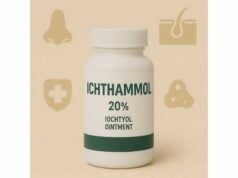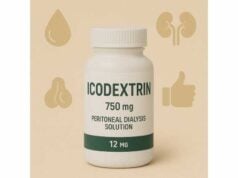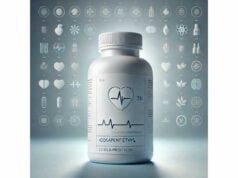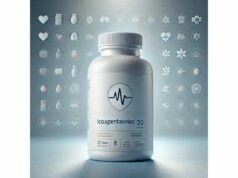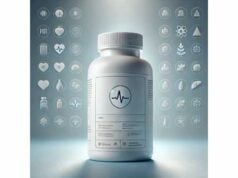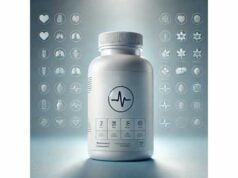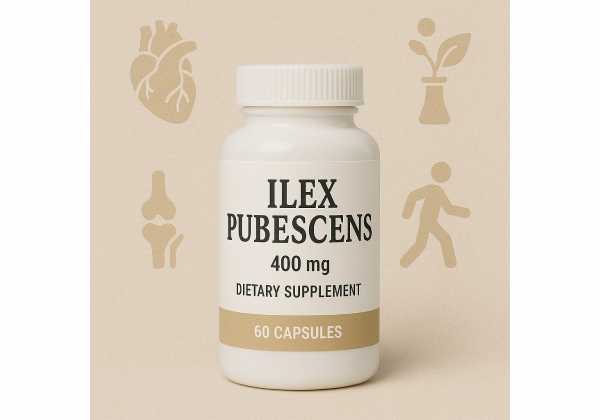
Ilex pubescens—often called Mao Dong Qing or pubescent holly—is a traditional East Asian medicinal plant used for circulatory and cerebrovascular concerns. Modern lab and animal data suggest anti-inflammatory, vasodilatory, antiplrombotic, and endothelial-protective actions driven by triterpene saponins and flavonoids. Formulas containing Ilex pubescens are being evaluated for heart failure and microvascular support, and purified extracts show neuroprotective effects in preclinical models. While clinical evidence on the single herb remains limited, the direction of research is consistent: improved blood flow, tempered inflammatory signaling, and potential benefits in conditions characterized by “blood stasis” and vascular dysfunction. This guide summarizes what is known—benefits, how it is used, practical dosing ranges drawn from traditional practice and emerging products, and safety points—so you can have an informed discussion with a clinician.
Key Insights
- Preliminary evidence points to vascular and neuroprotective effects; most human data come from multi-herb formulas rather than the single herb.
- Possible antiplatelet activity means added bleeding risk when combined with anticoagulants or before surgery.
- Typical oral use: 6–15 g/day dried root as a decoction; standardized extracts often provide 300–900 mg/day, titrated from low dose.
- Avoid if pregnant, breastfeeding, facing an invasive procedure, or taking warfarin, clopidogrel, DOACs, or high-dose NSAIDs.
Table of Contents
- What is Ilex pubescens?
- Proven benefits and where the evidence stands
- How to use it: forms and preparations
- Dosage: what amounts are typical?
- Safety, interactions, and who should avoid
- Buying quality, storage, and what to check
What is Ilex pubescens?
Ilex pubescens Hook. et Arn. is a holly species native to southern China and neighboring regions. In traditional Chinese medicine (TCM), its root (Radix Ilicis Pubescentis) is used to “activate blood,” disperse stasis, and relieve swelling and pain. In practical terms, those phrases map onto modern targets like platelet activity, endothelial tone, microcirculatory flow, and inflammatory signaling in vessel walls.
Botanical profile and parts used. The medicinal material is primarily the root, though stems and leaves are also studied. Roots are typically sliced and decocted. Commercial extracts may concentrate specific fractions—most often triterpene saponins (such as ilexsaponins) and flavonoids (e.g., rutin, quercetin derivatives). These groups show complementary actions: saponins often modulate inflammation and platelet function, while flavonoids influence oxidative stress, nitric oxide bioavailability, and microvascular tone.
Traditional uses that align with modern endpoints. Historically, Ilex pubescens has been used for chest oppression, sequelae of stroke, thromboangiitis obliterans, and painful swelling. Today, researchers model these as conditions of impaired perfusion and hyperinflammation—areas where the herb’s extracts show promise in animals and in vitro: reduced infarct size after ischemia-reperfusion, decreased pro-inflammatory cytokines (e.g., TNF-α, IL-6), and modulation of TLR/NF-κB pathways that drive vascular inflammation.
How it may work—plain-language overview.
- Endothelial support. Compounds in Ilex pubescens appear to help vessels dilate more readily and protect endothelial cells under stress, improving flow where microcirculation is compromised.
- Antiplatelet and hemorheologic effects. Extracts may reduce platelet aggregation and improve blood viscosity markers, which could translate to lower risk of microthrombi in preclinical models.
- Inflammation modulation. By dialing down pro-inflammatory signals and upregulating counter-regulatory cytokines, extracts may limit secondary tissue damage after ischemia.
- Neuroprotection in models. Flavonoid-rich fractions have shown reduced infarct volumes and better neurological scores in animals subjected to stroke paradigms.
Where it fits among related Ilex species. Other hollies—Ilex rotunda (Jiang-Xi holly), Ilex aquifolium (European holly), and Ilex paraguariensis (yerba mate)—share polyphenol and saponin chemistry but differ in dominant actives and customary use. Ilex pubescens is particularly associated with cardio-cerebrovascular indications in TCM and is more likely to be formulated with ginseng, Salvia miltiorrhiza, or Panax notoginseng in clinical practice.
Bottom line: Ilex pubescens is a vascular-focused herb with mechanistic plausibility supported by preclinical data. Human evidence for the single herb is limited; most clinical-context information comes from multi-herb formulas where Ilex pubescens is a key component.
Proven benefits and where the evidence stands
Clinical status at a glance. As of now, the most rigorous human data involve formulas that include Ilex pubescens for heart failure and post-ischemic support. Single-herb, placebo-controlled trials are scarce. However, the herb’s mechanisms are increasingly characterized, and targeted studies are underway.
Cardiovascular support (formulas with Ilex pubescens). In translational research, formulas combining Ilex pubescens with complementary herbs (for example, red ginseng) have improved left-ventricular ejection fractions, downregulated TLR4/NF-κB signaling, reduced fibrosis markers, and lowered pro-inflammatory cytokines in animal heart-failure models. These mechanistic outcomes align with how clinicians use the herb: to support perfusion, ease inflammatory drive, and improve ventricular remodeling. Importantly, a multicenter, randomized, double-blind, placebo-controlled clinical trial protocol has been published to evaluate a Kuoxin Formula for dilated cardiomyopathy–related heart failure. That trial’s outcomes (NT-proBNP reduction and functional measures) will clarify whether the mechanistic promise translates into patient-relevant benefits.
Cerebrovascular and neuroprotection (preclinical). Ethanol extracts and total flavonoid fractions of Ilex pubescens have reduced infarct size and improved neurological scores in rat models of cerebral ischemia. Mechanistically, this involves modulating TLR4–MyD88/TRIF signaling: lowering pro-inflammatory cytokines like TNF-α and IL-6 while boosting counter-regulatory IL-10 and TGF-β. These findings explain traditional post-stroke and “blood stasis” indications—but require careful clinical confirmation before routine use.
Peripheral vascular conditions. Thromboangiitis obliterans (TAO)—an inflammatory, thrombotic disease of small and medium-sized arteries—has been a classic indication in TCM texts. Contemporary pharmacology and metabolomics work suggests Ilex pubescens impacts lipid mediators and pathways relevant to vascular inflammation and thrombosis. While this is not clinical proof, it provides a biological bridge between traditional use and modern molecular pathways.
Inflammation and endothelial health. Across models, Ilex pubescens components reduce markers like NF-κB p65, ICAM-1, and VCAM-1 while influencing nitric oxide availability and oxidative stress. Together, these trends point to endothelial-centric benefits—the interface where blood meets vessel wall—which is central to many cardiometabolic disorders.
What is not proven yet.
- Event reduction in humans. There is no high-quality trial showing that Ilex pubescens alone reduces stroke, myocardial infarction, or death.
- Standardized dosing and actives. Preparations vary—total saponins vs. total flavonoids vs. whole-plant extracts—making it hard to generalize dosing from studies.
- Long-term safety. Toxicology signals are limited; prudent, short-term use under clinical guidance is advisable for people with comorbidities or on complex prescriptions.
Practical expectation setting. If you and your clinician choose to use Ilex pubescens, it should be as adjunctive support to standard care, with goals like easing microvascular symptoms (cold extremities, mild claudication sensations), supporting recovery after vascular events, or assisting heart-failure symptom management within a formula. Expect subtle, cumulative effects over weeks, not an immediate “drug-like” response.
How to use it: forms and preparations
Traditional decoction (root). The classic method is simmering sliced root in water. This captures water-soluble saponins and many flavonoids. In practice:
- Rinse sliced root.
- Simmer in 400–600 mL water for 25–35 minutes.
- Strain and divide into 1–2 servings per day.
- Some clinicians combine it with herbs that complement microcirculation and endothelial health (e.g., Salvia miltiorrhiza, Panax notoginseng), tailoring the formula to the individual.
Standardized extracts. Modern products may label standardization as “total saponins” or “total flavonoids.” Typical capsule strengths range 150–450 mg per capsule. Because standardization differs across brands, align your dose with the label’s suggested serving and any practitioner recommendation. When possible, look for:
- Assay values (e.g., “≥20% total saponins” or “≥30% total flavonoids”).
- Lot-specific certificates of analysis (COAs) confirming identity and purity.
- Contaminant screening (heavy metals, pesticides, microbes).
Glycerites and tinctures. Hydro-alcoholic tinctures can extract a broader spectrum of constituents than water alone. Typical strengths fall around 1:3 to 1:5 (w/v) in 40–60% ethanol. Given the vascular indications, conservative dosing is wise—especially if you use other antiplatelet agents.
Tea (leaf). Leaves are sometimes brewed as a mild tea. Compared with root decoctions or standardized extracts, leaf teas are gentler and less studied for cardiovascular endpoints. Consider them more as general wellness beverages than therapeutic preparations.
Topical use. In traditional contexts, external applications are occasionally used for localized swelling or bruising. Modern evidence is limited. If attempting topical use, avoid broken skin and discontinue if irritation occurs.
Combining with lifestyle and medication. For circulation-focused goals, pair any herbal plan with foundational measures: regular walking or physiotherapy as medically advised, smoking cessation, control of blood pressure and lipids, and consistent use of guideline-directed medical therapy (GDMT). Herbs do not replace anticoagulation, antiplatelet therapy, statins, or antihypertensives when those are indicated.
Quality and sustainability considerations. Because roots are harvested from wild or semi-wild populations, prefer brands that demonstrate traceability and sustainable sourcing. Look for botanical identity testing (e.g., macroscopic/microscopic ID plus chromatography) to rule out substitution.
Dosage: what amounts are typical?
Important context: There is no globally accepted, evidence-based dose for Ilex pubescens as a single herb. Dosing traditionally depends on constitution, pattern, and whether it’s part of a multi-herb formula. The ranges below reflect typical practice patterns and the strengths used in modern products; always individualize with a clinician.
Traditional decoction (root).
- Common range: 6–15 g/day of dried root, simmered as a decoction, taken in divided doses.
- Short-course higher range: 15–30 g/day is sometimes used within supervised formulas for short periods in robust adults. Do not self-escalate; higher amounts increase bleeding risk if combined with antiplatelet or anticoagulant drugs.
Standardized extracts (capsules or tablets).
- Starting range: 300–450 mg/day, divided once or twice daily.
- Moderate range: 600–900 mg/day when well tolerated and when the product specifies a standardized content (e.g., ≥20% saponins or ≥30% flavonoids).
- Titration: Start low for 1 week, reassess for bruising, nosebleeds, GI upset, or lightheadedness, then step up if needed and appropriate.
Tinctures (1:5 in 50–60% ethanol).
A conservative adult plan is 2–3 mL, 1–2 times daily, taken with food and a full glass of water. For sensitive individuals or people on interacting medications, 1 mL once daily may be adequate as an exploratory dose.
Timing and duration.
- With meals can reduce stomach upset.
- Trial window: Evaluate over 4–6 weeks for changes in peripheral warmth, exercise tolerance (as appropriate to your condition), or clinician-monitored markers (e.g., ankle-brachial index, symptom scales).
- Planned breaks: For long-term use beyond 8–12 weeks, build in 1–2 week breaks and periodic medication reviews to minimize interaction risk.
Special populations (always clinician-guided).
- Older adults (≥65 years): Start at the low end; consider every-other-day titration during the first two weeks.
- Liver or kidney disease: Use only with specialist oversight, at reduced doses, and with lab monitoring.
- Post-surgery or dental procedures: Stop at least 7–10 days before planned procedures because of potential antiplatelet effects.
What not to do.
- Don’t combine high doses with other blood-thinning supplements (high-dose fish oil, ginkgo, garlic concentrates) without medical guidance.
- Don’t substitute Ilex pubescens for prescribed antithrombotic therapy or heart-failure medications.
Safety, interactions, and who should avoid
General tolerability. In short-term, typical-dose use, most people tolerate Ilex pubescens without major issues. Mild stomach upset or loose stools can occur, especially with alcohol-based extracts or when taking on an empty stomach.
Potential adverse effects to watch for.
- Bleeding and bruising. Because of probable antiplatelet activity and hemorheologic effects, be alert for easy bruising, nosebleeds, bleeding gums, or prolonged bleeding from cuts.
- Dizziness or lightheadedness. In sensitive users or with concurrent antihypertensives, improved vasodilation can occasionally feel like orthostatic lightheadedness—especially when dehydrated.
- GI effects. Nausea or stomach discomfort is uncommon but possible; switch to food-based dosing or a different preparation if this occurs.
- Allergy. Rare, but any rash, itch, or swelling warrants discontinuation.
Drug interactions (use caution and coordinate with a clinician):
- Anticoagulants and antiplatelets: Warfarin, DOACs (apixaban, rivaroxaban, etc.), clopidogrel, prasugrel, ticagrelor—risk of additive bleeding.
- NSAIDs at analgesic doses: Ibuprofen, naproxen—additive platelet effects and GI risk.
- Antihypertensives: ACE inhibitors, ARBs, calcium-channel blockers, beta-blockers—monitor blood pressure for excessive drops.
- CYP or transporter interactions: Not well defined for this species; err on the side of caution in polypharmacy and monitor clinically relevant endpoints (INR if on warfarin; blood pressure; bleeding signs).
Who should avoid or use only under specialist care.
- Pregnant or breastfeeding individuals: Avoid due to insufficient safety data.
- Children and adolescents: Avoid self-directed use; safety data are lacking.
- Upcoming surgery or dental work: Discontinue 7–10 days prior unless a surgeon approves otherwise.
- Active peptic ulcer or bleeding disorders: Avoid because of potential antiplatelet effects.
- Significant hepatic or renal impairment: Use only if a specialist deems it necessary, at reduced doses with labs.
When to stop and seek care. Black stools, vomiting blood, unusual bruising, sudden severe headache, neurological changes, chest pain, or shortness of breath require immediate medical attention; stop the herb and seek emergency care.
A realistic role in care plans. Ilex pubescens should be considered adjunctive, not substitutive. Its best fit is alongside evidence-based therapy for heart failure, post-ischemic rehabilitation, or microvascular complaints, where a clinician can monitor outcomes and adjust medications to minimize risks.
Buying quality, storage, and what to check
Identity and standardization.
- Look for the full botanical name Ilex pubescens Hook. et Arn., part used (root), and extraction method (water/ethanol; ratio).
- Prefer products that specify standardized totals (e.g., “≥20% saponins” or “≥30% flavonoids”) and list testing methods (HPLC/UPLC).
Certificates of analysis (COAs). Reputable companies provide lot-specific COAs covering:
- Identity: Chromatographic fingerprint matching a validated reference.
- Purity: Microbial limits, residual solvents (for extracts), and heavy metals (Pb, Cd, As, Hg).
- Potency: Assay confirming the standardized marker range.
Form factor and packaging.
- Capsules/tablets: Protect from moisture and heat; keep the desiccant in the bottle.
- Tinctures: Store tightly capped; minimize light exposure.
- Raw root slices: Use from suppliers that document origin and provide batch testing; store in a cool, dry, dark place to limit oxidation and microbial growth.
Red flags.
- Vague labels without species, part, or extraction details.
- “Cure-all” or disease-treatment claims (noncompliant with supplement regulations).
- Lack of contactable quality team or missing COAs on request.
Sustainability and ethics. Roots are resource-intensive to harvest. Favor brands with traceability, cultivation programs, or third-party sustainability certifications. Ethical sourcing helps protect wild stands and supports long-term availability.
How to integrate into a personal plan. Keep a supplement list with product name, lot, daily dose, and start date. Share it at every medical appointment, particularly before procedures or when prescriptions change. For goal-oriented use (e.g., walking distance, cold-hand symptoms), track a simple two-item weekly log (symptom score 0–10; any side effects). Small, consistent notes help you and your clinician gauge benefit and risk.
References
- Botany, traditional uses, phytochemistry, pharmacology and toxicology of Ilex pubescens Hook et Arn 2019 (Systematic Review)
- Ethanol extracts from Ilex pubescens promotes cerebral ischemic tolerance via modulation of TLR4-MyD88/TRIF signaling pathway in rats 2020
- A Simplified Herbal Formula Improves Cardiac Function and Reduces Inflammation in Mice Through the TLR-Mediated NF-κB Signaling Pathway 2022
- Integrated network pharmacology and metabolomics reveal vascular protective effects of Ilex pubescens on thromboangiitis obliterans 2024
- Efficacy and Safety of Kuoxin Formula in the Treatment of Dilated Cardiomyopathy-Related Heart Failure: Study Protocol of a Randomized, Double-Blind, Placebo-Controlled, Multi-Center Clinical Trial 2024
Disclaimer
This article is for educational purposes only and does not substitute for personalized medical advice, diagnosis, or treatment. Ilex pubescens can affect blood clotting and blood pressure and may interact with prescription medicines. Do not start, stop, or change any supplement or medication without guidance from a qualified healthcare professional who knows your medical history. If you are pregnant, breastfeeding, planning surgery, or have a bleeding disorder, avoid use unless your clinician recommends it.
If you found this guide useful, please consider sharing it on Facebook, X (formerly Twitter), or any platform you prefer, and follow our updates. Your support helps us continue creating careful, high-quality health content.

